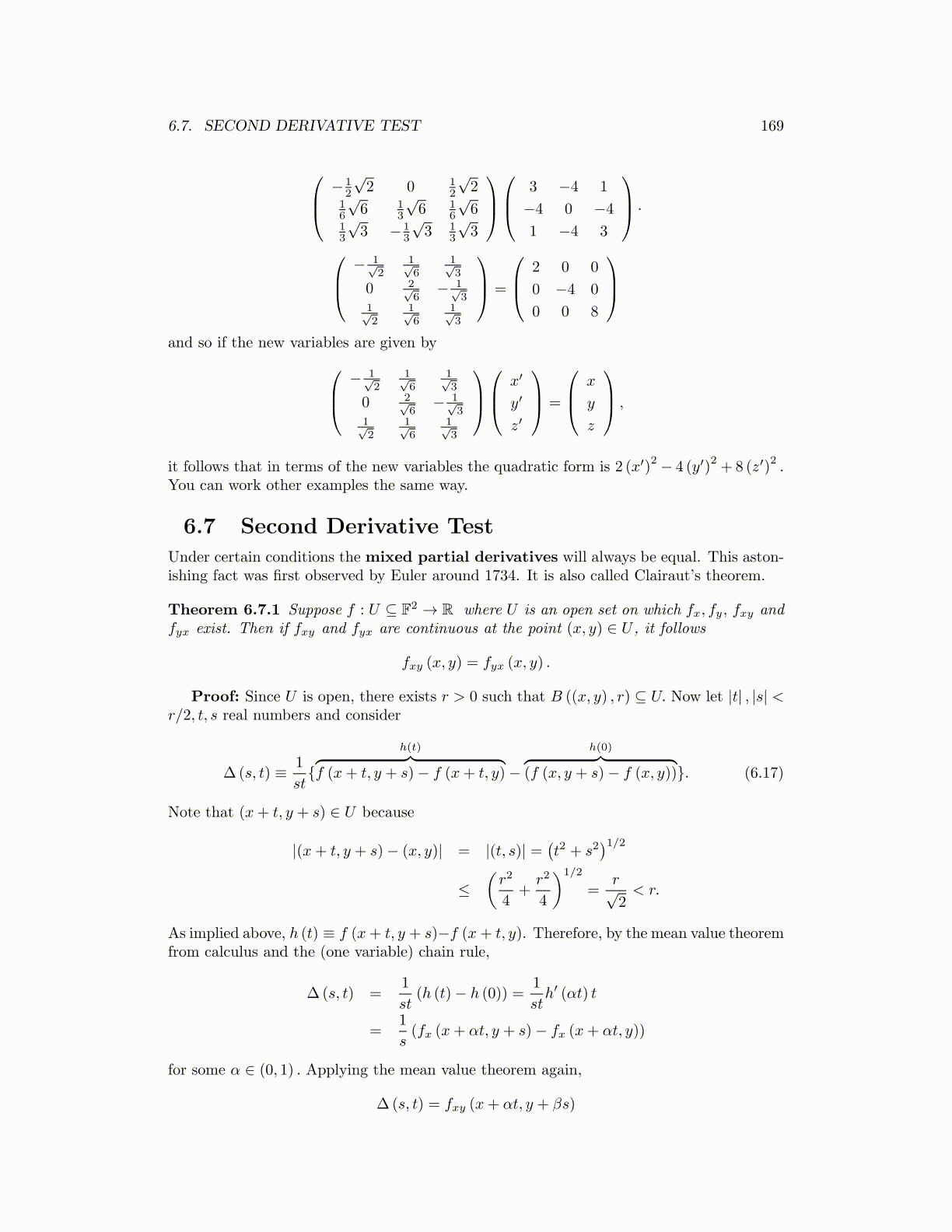
6.7. SECOND DERIVATIVE TEST 169
− 12
√2 0 1
2
√2
16
√6 1
3
√6 1
6
√6
13
√3 − 1
3
√3 1
3
√3
3 −4 1
−4 0 −4
1 −4 3
·
− 1√2
1√6
1√3
0 2√6
− 1√3
1√2
1√6
1√3
=
2 0 0
0 −4 0
0 0 8
and so if the new variables are given by − 1√
21√6
1√3
0 2√6
− 1√3
1√2
1√6
1√3
x′
y′
z′
=
x
y
z
,
it follows that in terms of the new variables the quadratic form is 2 (x′)2 − 4 (y′)
2+ 8 (z′)
2.
You can work other examples the same way.
6.7 Second Derivative Test
Under certain conditions the mixed partial derivatives will always be equal. This aston-ishing fact was first observed by Euler around 1734. It is also called Clairaut’s theorem.
Theorem 6.7.1 Suppose f : U ⊆ F2 → R where U is an open set on which fx, fy, fxy andfyx exist. Then if fxy and fyx are continuous at the point (x, y) ∈ U , it follows
fxy (x, y) = fyx (x, y) .
Proof: Since U is open, there exists r > 0 such that B ((x, y) , r) ⊆ U. Now let |t| , |s| <r/2, t, s real numbers and consider
∆ (s, t) ≡ 1
st{
h(t)︷ ︸︸ ︷f (x+ t, y + s)− f (x+ t, y)−
h(0)︷ ︸︸ ︷(f (x, y + s)− f (x, y))}. (6.17)
Note that (x+ t, y + s) ∈ U because
|(x+ t, y + s)− (x, y)| = |(t, s)| =(t2 + s2
)1/2≤
(r2
4+r2
4
)1/2
=r√2< r.
As implied above, h (t) ≡ f (x+ t, y + s)−f (x+ t, y). Therefore, by the mean value theoremfrom calculus and the (one variable) chain rule,
∆ (s, t) =1
st(h (t)− h (0)) =
1
sth′ (αt) t
=1
s(fx (x+ αt, y + s)− fx (x+ αt, y))
for some α ∈ (0, 1) . Applying the mean value theorem again,
∆ (s, t) = fxy (x+ αt, y + βs)